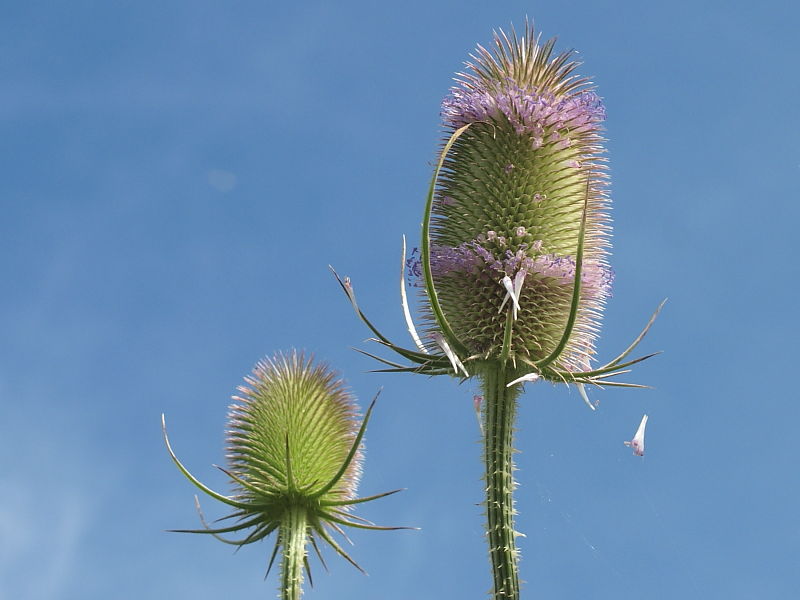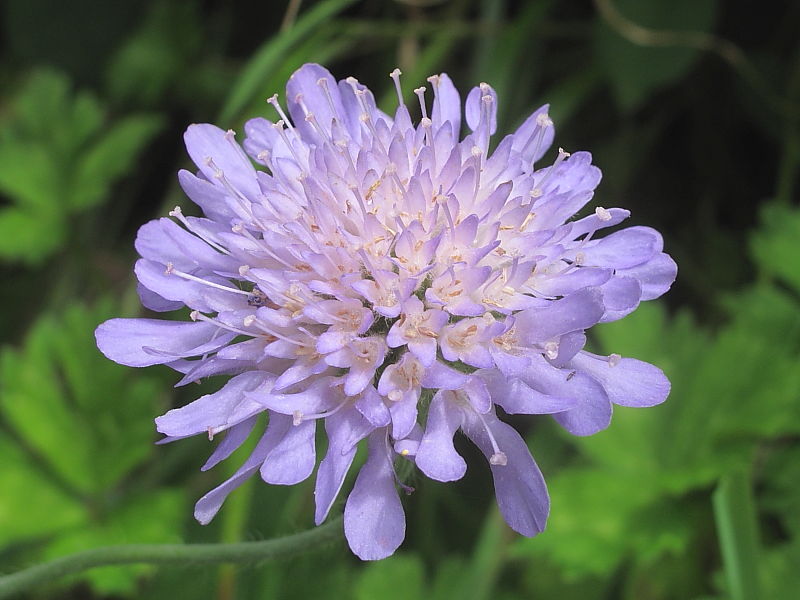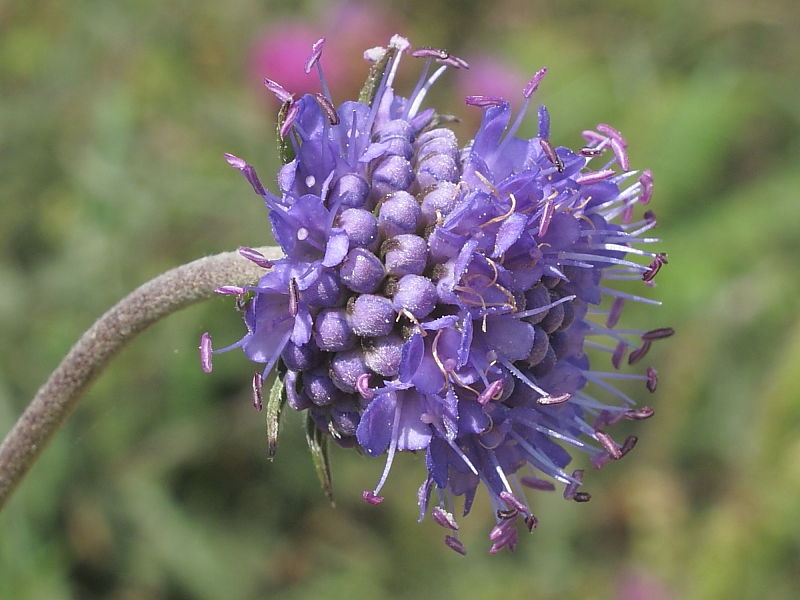Introduction to the Teasel family
This family is called Dipsacaceae and it has upright stems, opposite leaves and flowers in dense heads.
They are similar to members of the Daisy family (Asteraceae) but in the Teasel family the stamens are long-protruding and free.
It’s no surprise that the family includes Wild Teasel (Dipsacus fullonum) and Fuller’s Teasel (Dipsacus sativus) but it does also include scabious species as can be seen below.
People are familiar with teasels being used in the textile industry but it was in fact the Fuller’s Teasel that was cultivated for this, to raise the nap on cloth. Having been introduced it can now be found as an escapee.
Members of the Teasel family are recognised as important foodplants for the caterpillars of Mouse Moth and Mottled Rustic moth as well as the Marsh Fritillary butterfly.
The key things to look for when trying to identify the main members of the teasel family in Britain are given below. These include: whether the stems are spiny or not; whether the leaves are entire, toothed or pinnate; and the number of corolla lobes.
More details and images are given on the individual species pages.
The wild flower gallery has images of other wild flowers in Britain shown by family.
Wild Teasel (Dipsacus fullonum)
- stems – spiny
- bracts – spine tipped
Field Scabious (Knautia arvensis)
- stems hairy not spiny
- bracts not spine-tipped
- corollas 4-lobed
- stem leaves deeply pinnate
- outer flowers of head larger than central
Devil’s-bit Scabious (Succisa pratensis)
- stems hairy not spiny
- bracts not spine-tipped
- corollas 4-lobed
- stem leaves entire or weekly toothed
- flowers all more or less equal in size
The Devil’s-bit Scabious species page has many more images and a full description of this plant species as well as an insight into its importance to insects as a nectaring source and larval foodplant.


